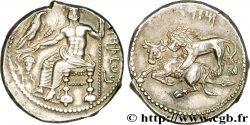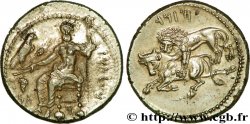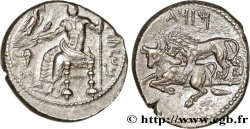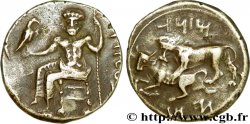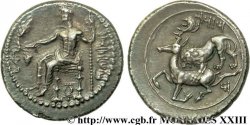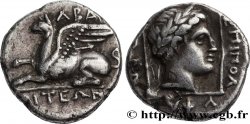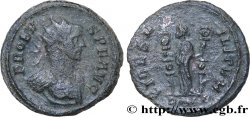- Accueil
- >
- >
Live auction - bgr_693203 - CILICIA - TARSUS - MAZAEUS SATRAP Statère
You must signin and be an approved bidder to bid, LOGIN TO BID. Accounts are subject to approval and the approval process takes place within 48 hours. Do not wait until the day a sale closes to register. Clicking on "BID" constitutes acceptance of the terms of use of cgb.fr private live auctions.
Bids must be placed in whole Euro amounts only. The sale will start closing at the time stated on the item description; any bids received at the site after the closing time will not be executed. Transmission times may vary and bids could be rejected if you wait until the last second. For further information check the Live auction FAQ
All winning bids are subject to a 18% buyer’s fee.
All winning bids are subject to a 18% buyer’s fee.
| Estimate : | 800 € |
| Price : | 400 € |
| Maximum bid : | 400 € |
| End of the sale : | 07 March 2023 14:22:31 |
| bidders : | 1 bidder |
Type : Statère
Date: c. 351 AC.
Mint name / Town : Cilicie, Tarse
Metal : silver
Diameter : 23,5 mm
Orientation dies : 9 h.
Weight : 10,47 g.
Rarity : R2
Slab

NGC :
Coments on the condition:
Exemplaire centré des deux côtés. Très joli revers, bien détaillé. Fine usure superficielle. Patine grise de collection
Catalogue references :
Predigree :
Exemplaire sous coque NGC Ch XF (Strike 4/5, Surface 2/5)
Obverse
Obverse legend : (BLTRZ, "BAAL TARZ" = BAALTARS) EN ARAMÉEN.
Obverse description : Baaltars assis à gauche, nu jusqu’à la ceinture tenant de la main droite un sceptre sur lequel est placé un aigle debout à droite ; dans le champ à gauche, une grappe de raisin et un épi de blé ; sous le trône, un monogramme.
Reverse
Reverse legend : (MZDI ZI AL EBERNAHARA VU KILIK, "MAZDAI" = MAZAIOS GOUVERNEUR DE TRANS-EUPRHATESIA ET CILICIE) EN ARAMÉEN.
Reverse description : Lion attaquant un taureau et le dévorant ; au-dessous, une muraille.
Commentary
Le trésor de Tarse découvert en 1982 (CH. VIII/ 178) enfoui vers 325 avant J.-C. contenait sur une cinquantaine de monnaies d’argent, un statère de ce type (pl. XXVI/5). C’est l’enceinte d’une ville qui est représentée avec huit tours.







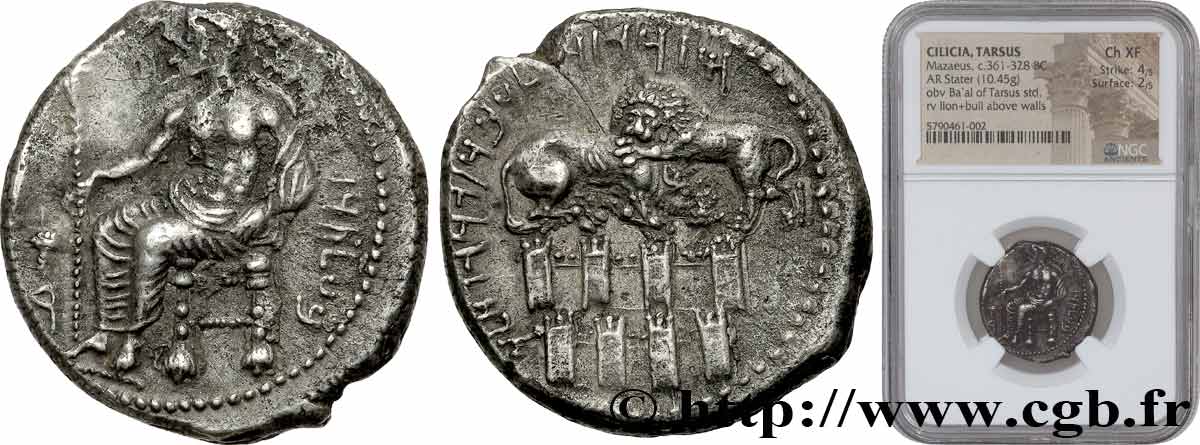
 Report a mistake
Report a mistake Print the page
Print the page Share my selection
Share my selection Ask a question
Ask a question Consign / sell
Consign / sell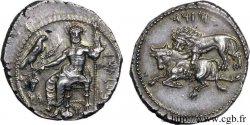
 Full data
Full data